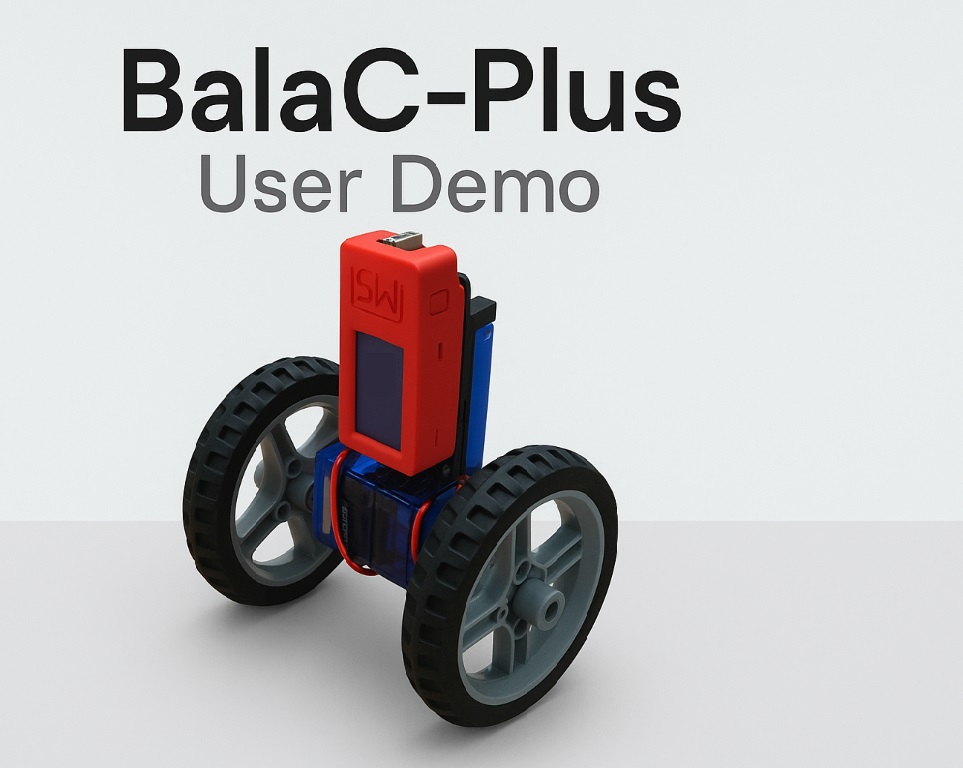BalaC-Plus
SKU:K038-B
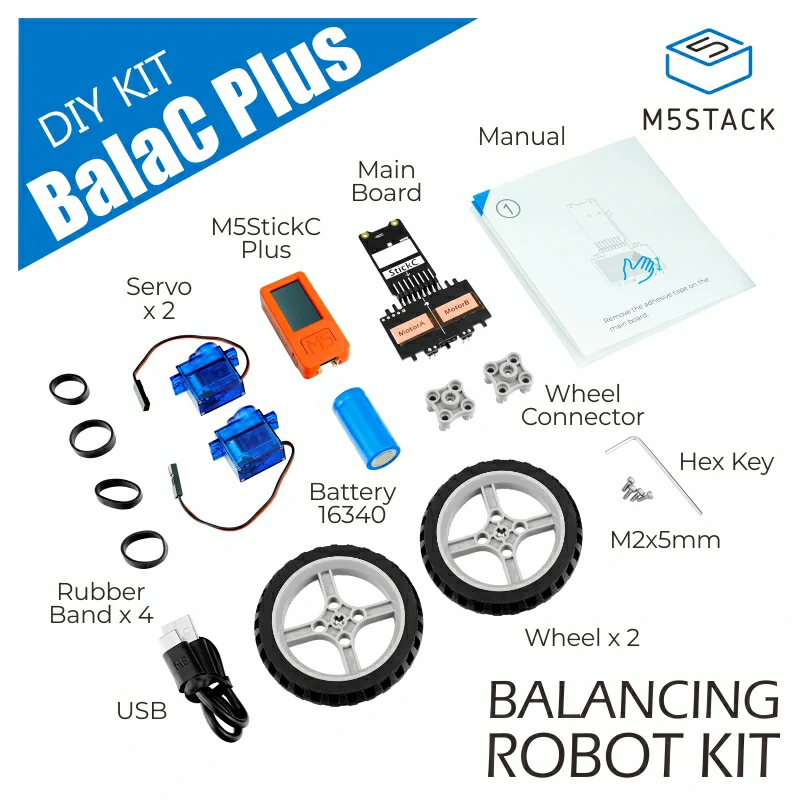
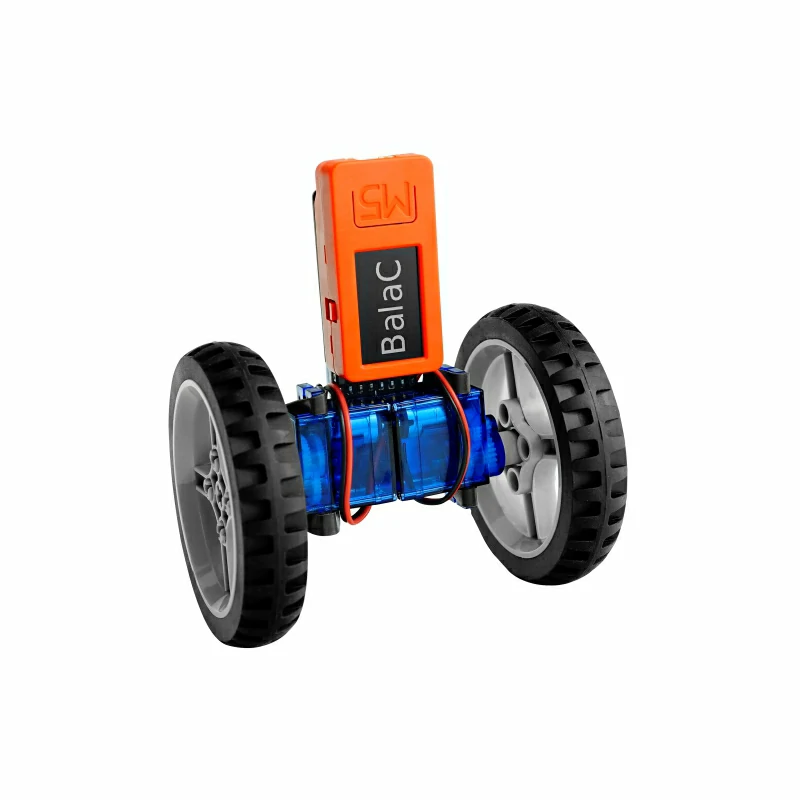
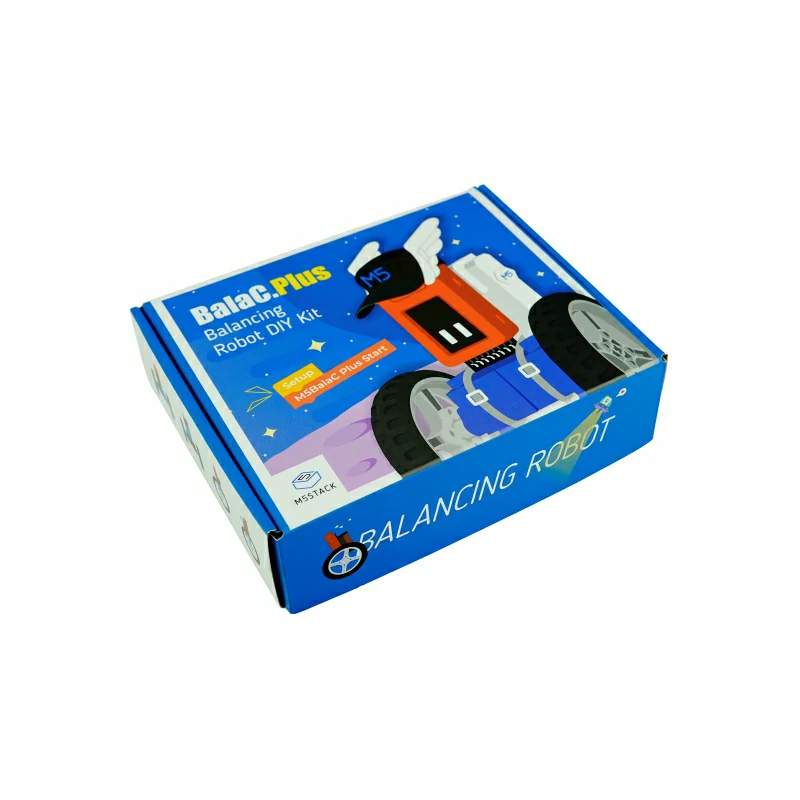
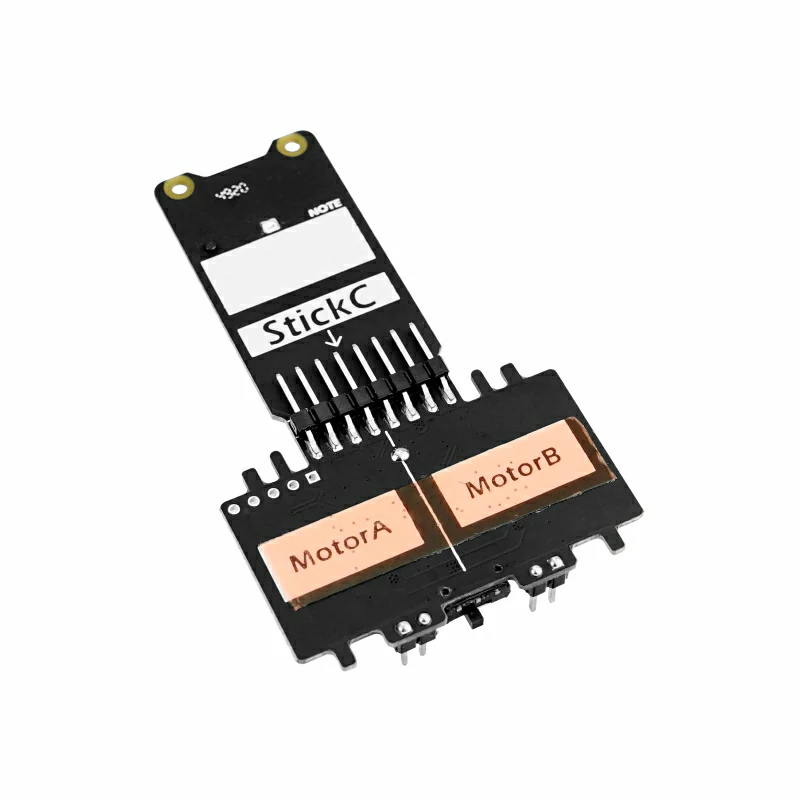
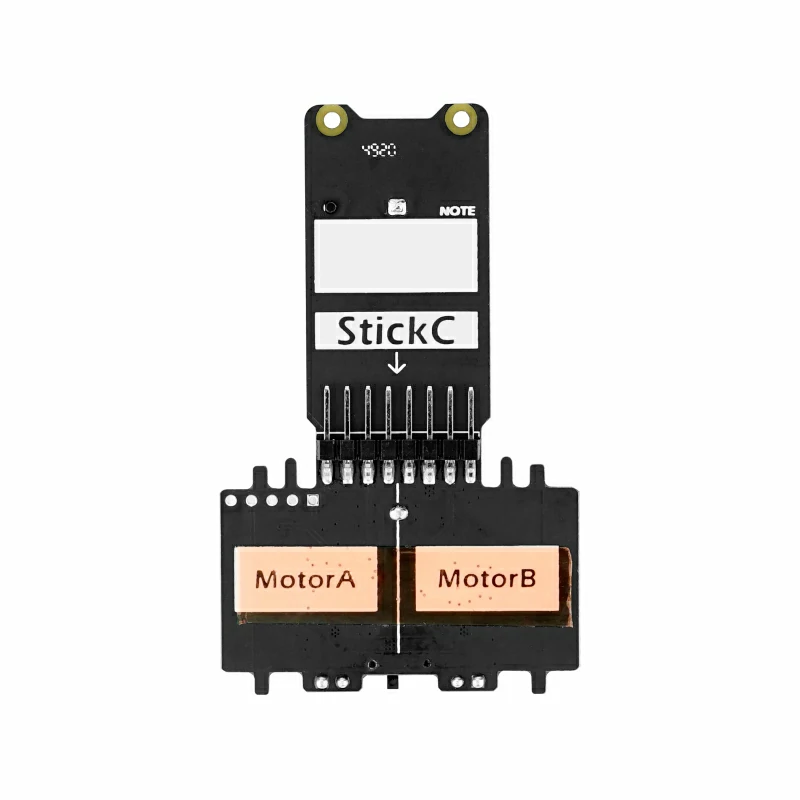
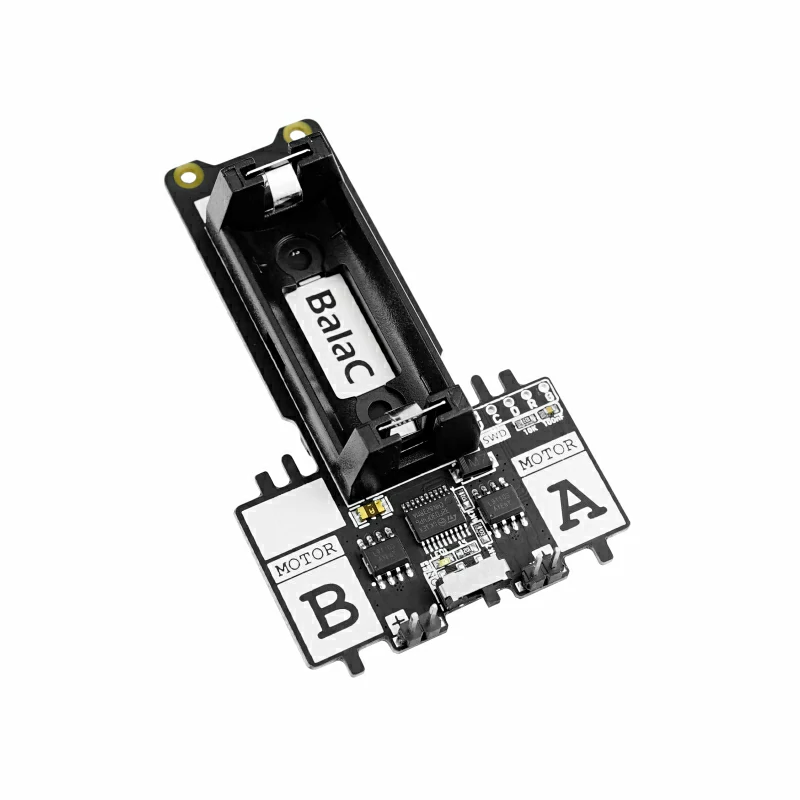
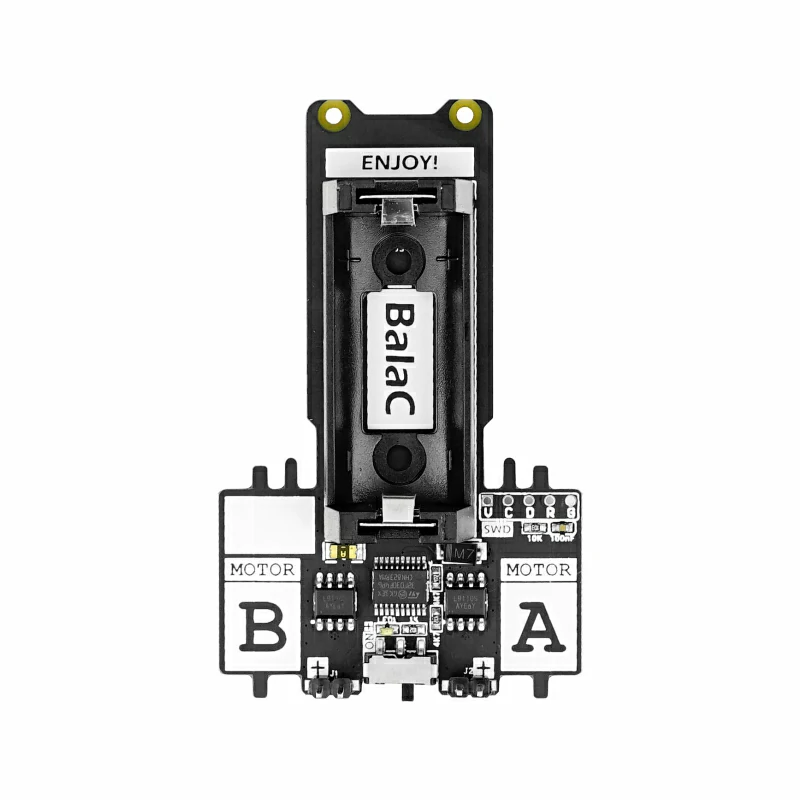
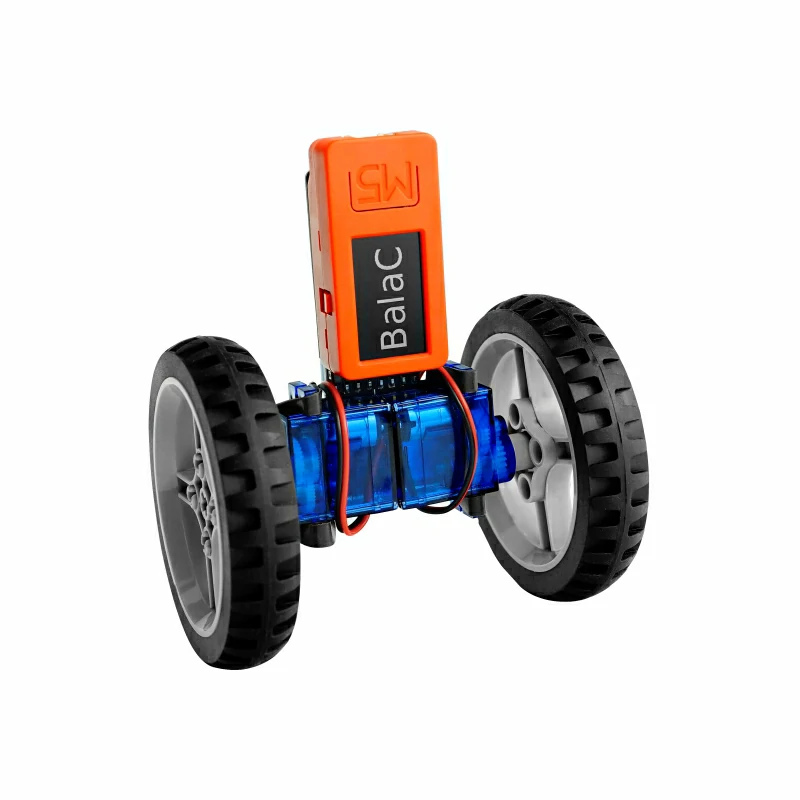








Description
BalaC PLUS is a DIY self-balancing two-wheeled vehicle. Its base uses the STM32 series main controller, with two onboard motor driver ICs, a power indicator light, and a replaceable rechargeable battery. The lightweight design and 360° servo drive form allow you to write a balancing program easily using the UIFlow graphical interface. The kit includes StickC PLUS, which, with its built-in MPU6886, performs attitude calculation, controls the servo to compensate in real time by calculating the offset value, achieving balance. The Lego-compatible design lets you switch to different tires. If you want to learn about PID-related topics or need a fun programming toy product, BalaC PLUS might be a great choice.
Tutorial
This tutorial mainly demonstrates the method of flashing the balance car firmware for BalaC-Plus and performing calibration operations.
Features
- Based on ESP32+STM32
- Personalized DIY
- Detachable design
- Dual-wheel motor drive
- Replaceable battery
- Development Platform:
Includes
- 1 x StickC-Plus
- 1 x BalaC Base
- 2 x Tires
- 2 x Tire Adapters
- 2 x 9G Servos
- 2 x Rubber Bands
- 2 x Screws
- 1 x Hex Key L-Shape
- 1 x 16340 700mAh Battery
- 1 x USB Type-C Cable (20cm)
- 1 x Assembly Manual
Applications
- Self-Balancing Vehicle
Specifications
| Specification | Parameter |
|---|---|
| ESP32-PICO-D4 | 240MHz dual core, 600 DMIPS, 520KB SRAM, Wi-Fi |
| MCU | STM32F030F4P6 |
| Servo | Rotation Angle: 360°, No-load Speed: 0.12 sec / 60 degrees (4.8V) |
| Driver | L9110S |
| Communication Subcontroller | STM32F030F4P6 |
| Communication Protocol | I2C: 0x38 |
| Battery | 16340, 700mAh rechargeable lithium battery |
| Product Size | 30.0 x 100.0 x 105.0mm |
| Product Weight | 120.0g |
| Package Size | 148.0 x 118.0 x 42.0mm |
| Gross Weight | 156.0g |
Learn
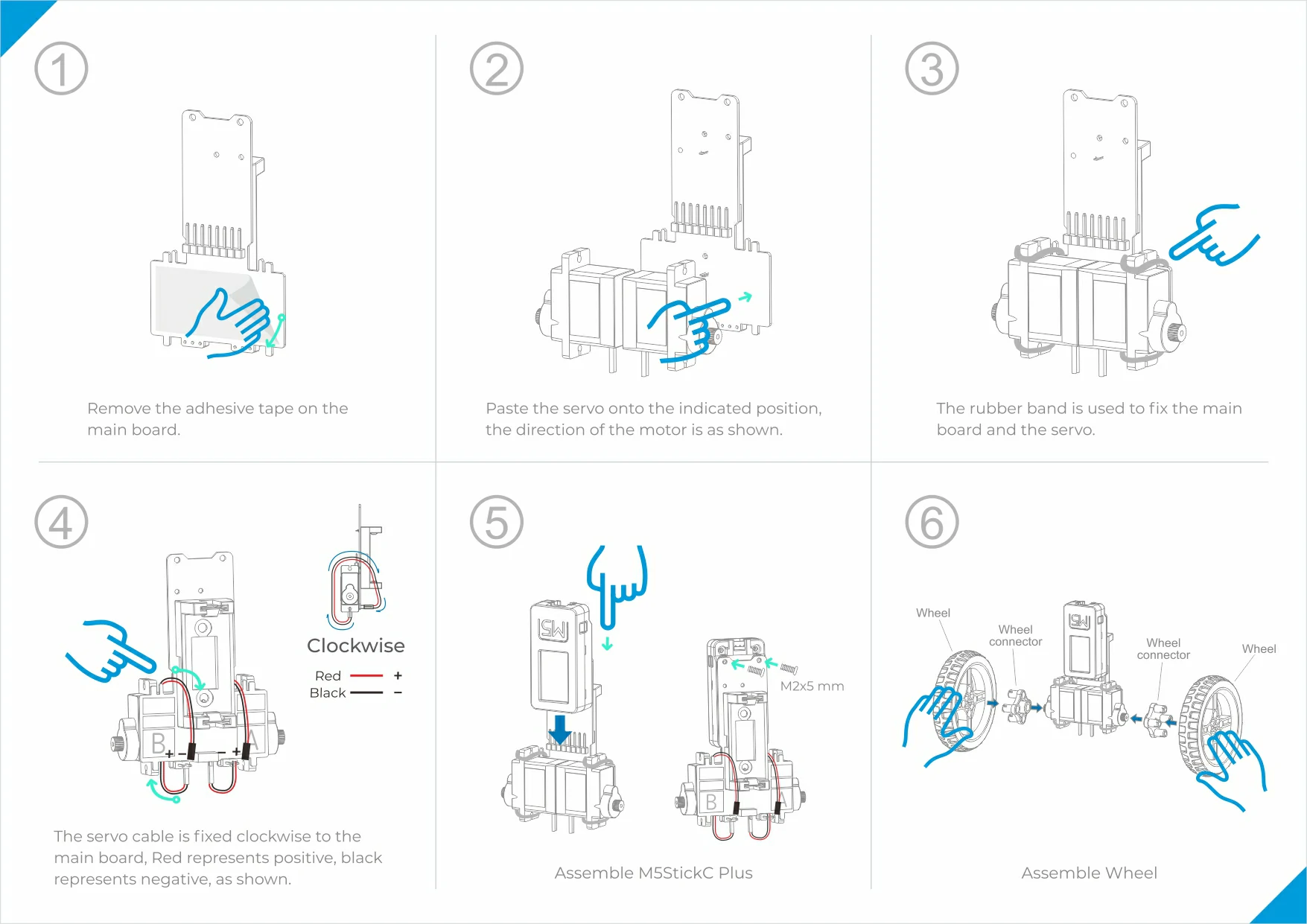
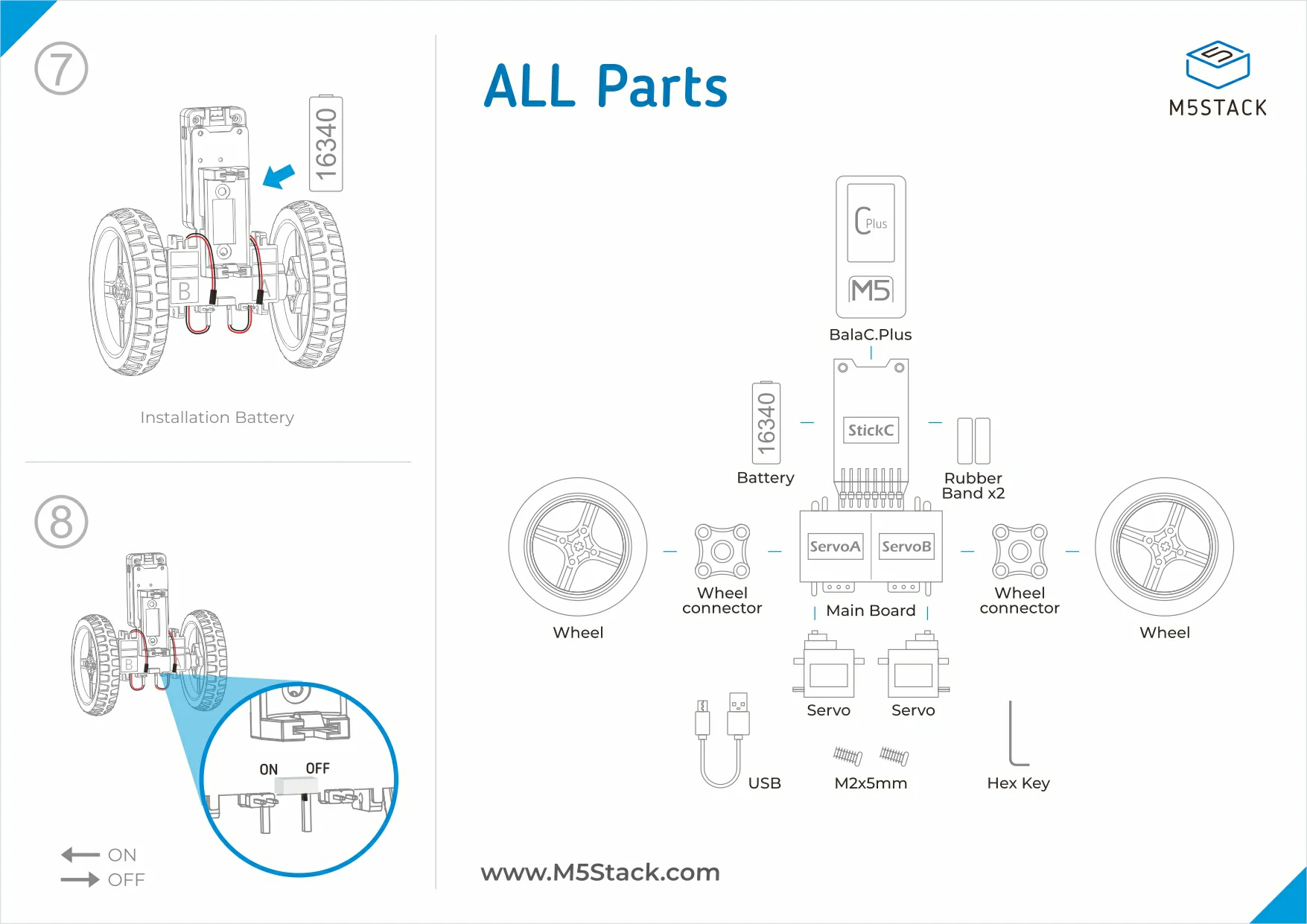
Softwares
Quick Start
Arduino
UiFlow1
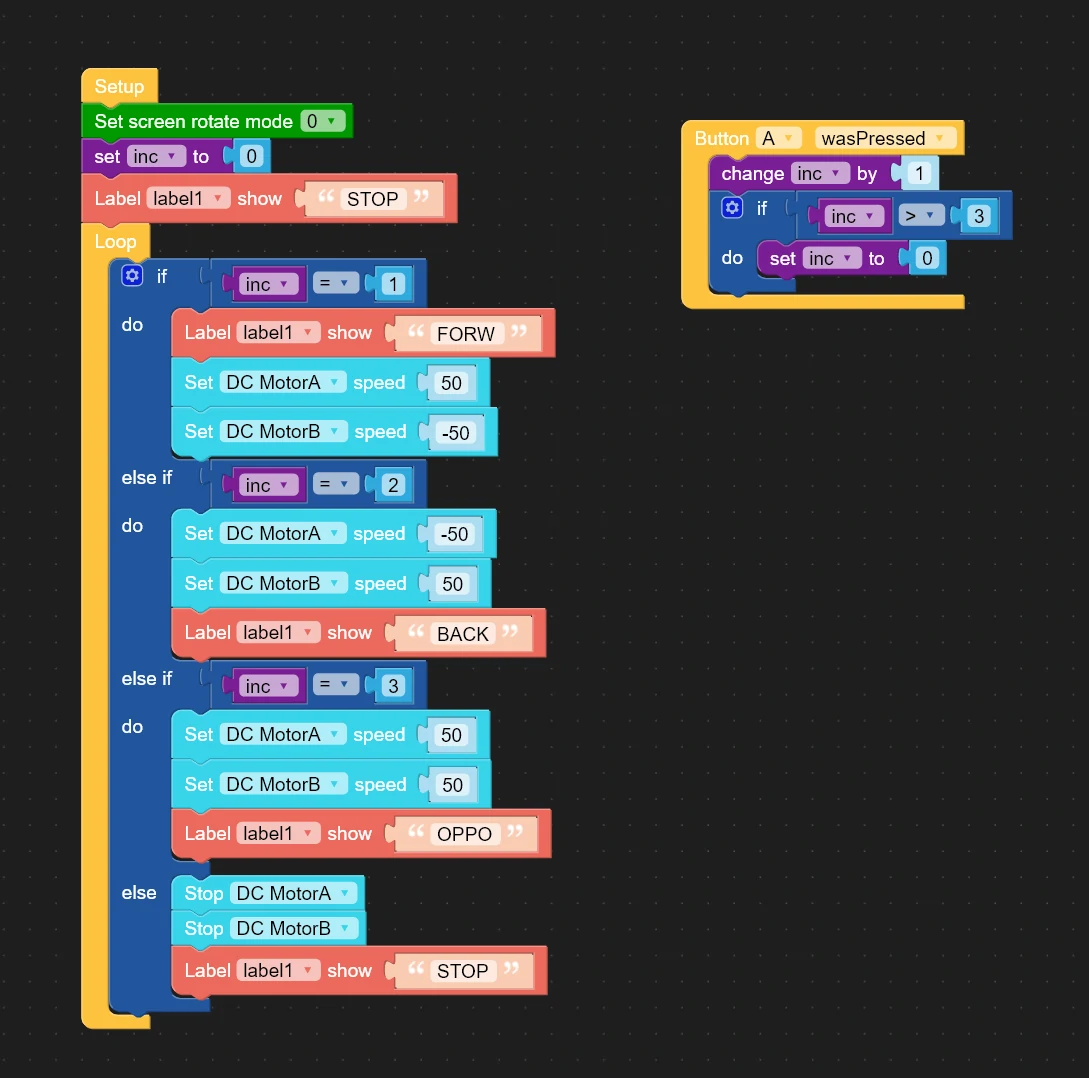
Easyloader
| Easyloader | Download | Note |
|---|---|---|
| BalaC-Plus Test Easyloader | download | / |
| BalaC-Plus Balance Demo Easyloader | download | / |
Video
- Short press the power button after powering on to calibrate. The LED will blink. When calibration is successful, the device will automatically maintain balance.
